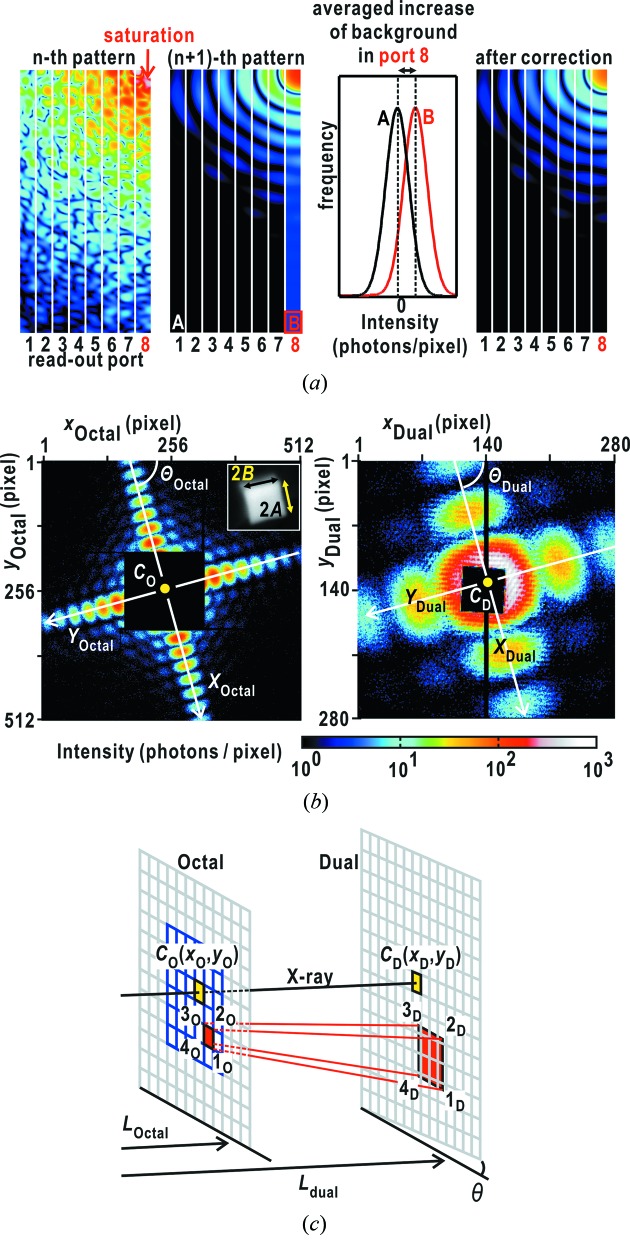Figure 4.
Schematic illustration of some of the algorithms used in the SITENNO suite. (a) Schematic illustration regarding background subtraction for a detector readout port (port 8 in this illustration) containing pixels receiving X-ray photons exceeding the saturation limit. For instance, the saturation limit for X-rays of energy 5.5 keV is approximately 2500 photons per pixel. Just after some pixels in a readout port (here, for instance, port 8) are in saturation in the nth diffraction pattern (left panel), the noise of all pixels in the port increases by approximately one photon in subsequently collected patterns (the second panel from the left). The average increase of the noise in the port is evaluated by comparing the frequency distribution (red line in the graph) of readout counts in ROIs of 64 × 50 pixels placed at the edges of the port (B in port 8) with that (black line) in a port free from saturation events (A in port 1). We obtain the diffraction pattern shown in the right-hand panel by subtracting the average value from the raw data. (b) The orthogonal coordinates, X Octal and Y Octal (X Dual and Y Dual), used to approximate the Fraunhofer diffraction pattern from a cuboid-shaped copper oxide particle with edge lengths of 2A and 2B as shown in the inset of the left-hand panel. Parameter ΘOctal (ΘDual) represents the angle between the coordinate and the MPCCD-Octal (MPCCD-Dual) detector edge. (c) Schematic illustration to calculate how many pixels on the MPCCD-Dual detector correspond to one pixel on the MPCCD-Octal detector. The parameters and calculation details are described in the text.

